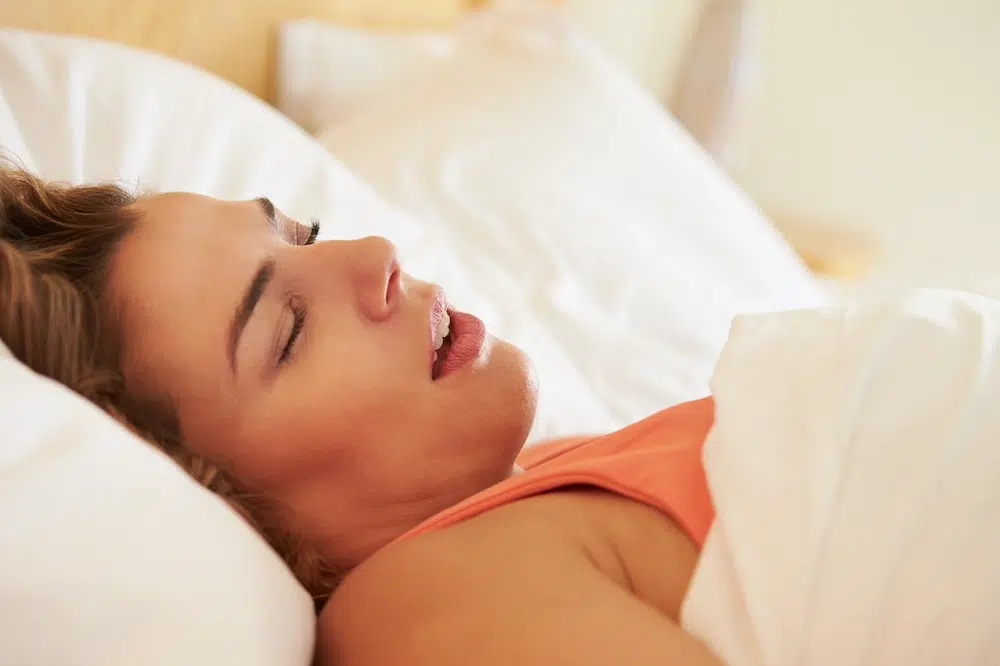
What Is Mild OSA – Things To Know
Sleep is crucial, but not everyone finds it easy. Enter OSA or Obstructive Sleep Apnea. This sleep disorder happens when our breathing stops and starts while we’re asleep.
But here’s the thing – OSA isn’t the same for everyone. It has three main levels: Mild, Moderate, and Severe. Each comes with its challenges.
What is Mild OSA? Well, while it sounds less serious, Mild OSA can still interrupt your sleep and affect your health.
It’s essential to understand and address it, ensuring peaceful nights and healthier days.
Identifying Mild OSA
What Is Mild OSA And Its Main Signs?
Mild OSA, or Mild Obstructive Sleep Apnea, is a sleep problem. When someone has OSA, their breathing stops and starts while they sleep.
In the mild form, this happens 5 to 15 times in an hour. Here are the 5 main signs:
1. Loud Snoring
This is not just regular snoring. It is very loud and happens often.
2. Feeling Tired
Even after a full night’s sleep, you will still feel very tired.
3. Morning Headaches
You wake up with a headache often.
4. Forgetfulness
You will forget things more than usual.
5. Mood Changes
You will feel sad, irritated, or even angry for no clear reason.
Who Is More Likely To Have Mild OSA?
There are 5 things that make some people more likely to have Mild OSA:
1. Being Overweight
Extra fat around the neck can make the airway narrow. This makes breathing hard during sleep.
2. Age
Older adults, usually those over 40, are more at risk.
3. Family
History: You will be more likely to have it, too, if someone in your family has OSA.
4. Having A Small Airway
Some people are born with a small throat or have tonsils that block the airway.
5. Alcohol Or Sedative Use
These can relax the muscles of the throat, which can cause a block.
Why Should You Care Early On?
Finding and treating Mild OSA early is very important. Here are 4 reasons why you should care early:
1. Better Sleep
Treatment helps you sleep better. Good sleep means you’ll feel more awake and happy during the day.
2. Good Health
If left untreated, OSA can lead to bigger health problems like heart disease.
3. Safety
When you feel less tired, you are safer. There is less chance of accidents like car crashes.
4. Protect Your Heart
Treating OSA can help lower blood pressure and protect your heart.
See a doctor if you think you have Mild OSA. They can check and help find the best treatment for you. It’s better to know and treat it early than to wait.
Diagnostic Process
Understanding Sleep Studies (Polysomnography) For OSA Diagnosis
Let’s start by understanding what a sleep study is. Imagine you’re trying to solve a puzzle, but you can only see a small piece of it.
This puzzle is how you sleep at night. A sleep study, also known as polysomnography.
Here are 3 aspects of how it works:
1. Where It Happens
Usually, it’s done at a sleep center. You’ll sleep in a bed that looks like a hotel room.
2. What They Measure
While you sleep, small sensors are attached to your body. These sensors watch your brain waves, eye movement, heart rate, breathing, and even the oxygen in your blood.
3. Purpose
This study finds out if you stop breathing (or breathe very little) while you sleep, which is a sign of Obstructive Sleep Apnea (OSA).
Home Sleep Apnea Testing And Mild OSA
1. Why Is It Helpful?
Some folks will have a light or “mild” case of OSA. For them, a big sleep study will feel like using a bulldozer to dig a tiny hole. A home test is simpler and just right for checking out mild cases.
2. How It Works
You’ll get a kit from a doctor. This kit has some tools that check your breathing and oxygen when you sleep at night. It’s less detailed than the big sleep study but still gives good info.
Making Sense Of AHI And RDI In Mild OSA
AHI (Apnea-Hypopnea Index)
This number tells how many times in an hour you either stop breathing (apnea) or your breathing becomes very shallow (hypopnea).
- 0-5: Normal
- 5-15: Mild OSA
- 15-30: Moderate OSA
- Over 30: Severe OSA
RDI (Respiratory Disturbance Index)
This is like AHI, but it counts other breathing issues, too, not just apneas and hypopneas.
It means you have other breathing disturbances that aren’t full stops or shallow breaths if your RDI is a lot higher than your AHI.
For Those With Mild OSA
- Your AHI will be between 5 and 15.
- Your RDI will be a bit higher than AHI because it counts more kinds of disturbances.
Understanding Mild OSA’s Impact On Health
Effects Of Sleep Fragmentation And Reduced Sleep Quality
Mild OSA breaks up your sleep. It’s like someone keeps pausing your favorite movie. Even with 8 hours in bed, you will feel tired because your sleep wasn’t deep.
The Relationship Between Mild OSA And Daytime Sleepiness
With mild OSA, you often feel sleepy during the day. Your sleep gets interrupted at night, so you miss the restful parts. You will need a nap even after a “full night’s sleep.”
Potential Consequences For Overall Health And Well-Being
Mild OSA can stress your body, raising blood pressure and risking heart issues. Being tired can also lead to poor focus and mood changes. Good sleep is key for health and happiness.
Lifestyle Factors And Mild OSA
The Role Of Weight And Obesity In Mild OSA Development
Extra weight, especially around the neck, can press on your airways. This makes it hard to breathe when sleeping. Being overweight increases the risk of having OSA.
Impact Of A Sedentary Lifestyle And Lack Of Physical Activity
Not being active can weaken muscles, including those in the throat. Weak throat muscles can collapse easily, blocking air during sleep. Staying active helps reduce OSA risks.
Dietary Considerations And Their Influence On Sleep Apnea Symptoms
When we talk about diet and its effects on OSA, here are 3 things you should know:
Weight Gain
Eating unhealthy foods, especially those high in fats and sugars, can lead to weight gain, affecting OSA.
Relaxing Agents
Some foods and drinks, like alcohol and caffeine, relax throat muscles, making sleep apnea worse.
Balanced Choices
A balanced diet, with lots of fruits, vegetables, and lean proteins, can help manage OSA symptoms.
Treatment Approaches For Mild OSA
Lifestyle Changes And Better Sleep Habits
Weight Control
Being overweight can cause OSA. Losing weight will reduce or even cure this sleep problem. Healthy food and regular exercise are key for weight loss.
Sleep Position
Some people find that sleeping on their back can cause problems breathing. Try sleeping on your side. Special pillows help you stay in this position.
Limit Alcohol And Medicine
Some things, like alcohol or certain medicines, can make OSA worse. They relax the muscles in your throat. It’s a good idea to avoid them close to bedtime.
Using A CPAP Machine For Mild OSA
CPAP Benefits
- Keep the airway open during sleep.
- Can reduce or eliminate sleep apnea symptoms.
- May improve sleep quality and energy during the day.
CPAP Challenges
- Some find it uncomfortable to wear.
- Can be noisy for both the user and bed partner.
- Maintenance and cleaning required.
Why Using It Matters
For the best results, you should use the CPAP machine every night. Your doctor will give you tips or solutions if you find it hard.
Mouth Tools (Oral Appliance Therapy)
How They Help
There are tools you can wear in your mouth, kind of like a sports guard. These tools can help move parts of your mouth to help you breathe better.
Do They Work for Mild OSA?
Yes, these tools can be a good choice for some people with mild OSA. Some find them more comfortable than a CPAP machine.
But they won’t be the best for everyone. Always talk to a doctor or dentist before trying them.
Lifestyle Recommendations For Mild OSA Management
Regular Exercise Helps
Being active is great for our bodies. When you move more, like walking or playing, it can help with OSA. Exercise helps us breathe better when we sleep. It can also make us feel more awake during the day.
Eating Right For Better Sleep
What we eat can change how we sleep. Foods that are good for us, like fruits, vegetables, and lean meats, can help manage weight.
Being at a healthy weight can reduce OSA. Also, try to avoid big meals right before bed.
Make Your Bedroom Sleep-friendly
Sleep Space: Your room plays a big part in how well you sleep. It should be dark and quiet. Using curtains and turning off noisy devices can help.
A comfortable bed and pillow matter, too. Cool air often makes for better sleep, so think about the room’s temperature.
FAQs
1. Does Mild OSA Need Treatment?
Yes, mild OSA often needs treatment. Even though it’s “mild,” it can still cause health problems and affect your sleep quality.
2. Can You Live With Mild Sleep Apnea?
Yes, people can live with mild sleep apnea, but it’s important to manage it. It can lead to bigger health issues over time if not treated.
3. What Are The Risks Of Mild Sleep Apnea?
Mild sleep apnea risks include tiredness during the day, higher chances of accidents, and long-term health problems like heart issues or high blood pressure.
Conclusion
In wrapping things up, understanding sleep disorders is more than just knowing the terms. What is Mild OSA? It’s a lighter form of Obstructive Sleep Apnea, but still important.
While it seems ‘mild,’ it can significantly impact our nights and days. Recognizing and addressing Mild OSA can lead to better sleep, improved health, and a brighter tomorrow.
Always prioritize understanding and caring for your sleep patterns. Sleep well, live well.



